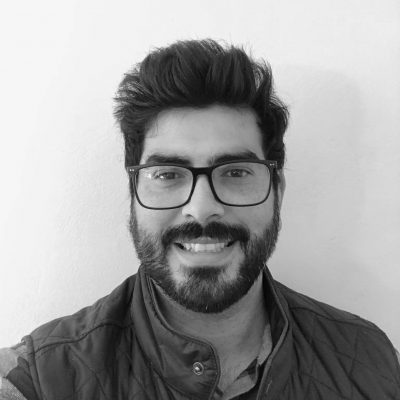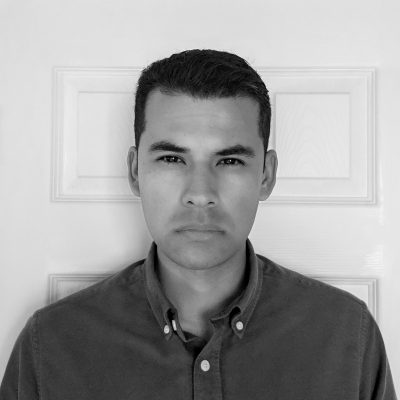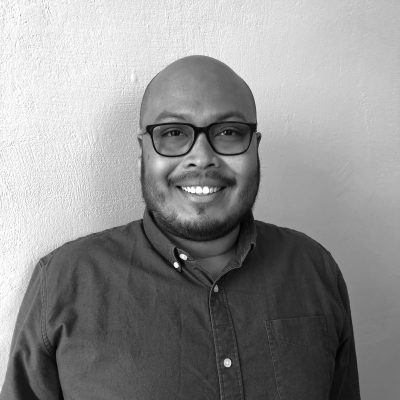Building Discussion with the Shaping Logics Podcast in Barrio Logan
When alumni Abel Zatarain, Miguel Reyes and Hector Aramburo founded the Shaping Logics podcast, the team wanted to create a new platform for honest exchange. Produced in Barrio Logan, the podcast was made as a way to discuss the fields of design and architecture. Today, the collaborative effort is over a year in the making and has featured a number of voices across San Diego. We recently caught up with the team to discuss their individual paths to architecture, how the podcast is evolving, and some of their favorite moments so far.
Interview with Shaping Logics
Q: Why did you choose to study architecture?

Hector: I didn’t really intend to study architecture. As a child, I enjoyed ‘inventing’, making things, and taking objects apart to figure out how they worked. Before architecture school I was a music major, but quickly lost interest once music became homework. I took two years off and focused on writing music and performing at local coffee shops. I realized the impact that space had on all aspects of music performance and sound. I guess you could say that music made me spatially aware. Once I went back to school, I took a couple of architecture courses and I was intrigued by the process of design. It was very similar to the process of music writing. The elements of rhythm, harmony, structure, and dynamic as a formal expression all existed in architecture. At that moment I decided what I was going to do with my life.
Abel: Growing up I spent hundreds of hours playing video games. Eventually once the novelty of the game wore off, the designs of the game itself became more interesting, I would ask, “How can I change the wallpaper pattern, or how the river moves along this map, the graphics of the ship”. This led to me modding parts of the games, designing alternate versions of what someone else had made. Around the same time, I was taking art classes, exploring different mediums and processes but I found that drawing in particular was striking. When it was time to decide on what to do after high school I was drawn towards architecture; I didn’t fully comprehend what architecture was or what an architect did, but intuitively I could tell that architecture aligned with those interests of building environments, design, and drawing.
Miguel: I started late. I was never that LEGO architect everyone seems to be as a child. I went to school for journalism after high school and dropped out after a year. I was fortunate enough to travel through Europe and South America during those years, and I just fell in love with buildings. Once I saved up enough money I went back to school.
Q: Shaping Logics serves as a platform to discuss topics of interest in the fields of design and architecture. Can you tell us more about how the podcast started, and your goals for the podcast?

Abel: We all met at Woodbury and then reconnected about two years ago working professionally. Some of these conversations were being played out during lunch; usually after dealing with a demanding client, a slow city planner, or a poorly implemented Revit function. Eventually, one of us said, “This is a podcast”, then “Hey, we should do a podcast”. And then we did. For me the interest was in the medium itself; normal day-to-day interactions don’t lend themselves to be meandering two-hour dialogues. My goal for the podcast is to consistently expose the hosts and listeners to curious people, provocative ideas, and exciting discourse.
Miguel: One day we decided that we needed work at communicating our thoughts and ideas, so we forced ourselves to record our conversations in order to have the pressure of getting better at articulating our thoughts. Once we started, we reached out to people who we know and are doing interesting work to have a conversation with them. There are no specific goals we just want to get away from the archi speak of academia and have normal conversations with people in the fields that interest us, like a normal human being. We want to have those conversations that we never get in school. We want that realness.
Q: Shaping Logics is a podcast produced in Barrio Logan. How does the city and the neighborhood shape your podcast, and more broadly, your work?
Abel: The topics we discuss and examples we use come directly from what we’ve witnessed happen in the neighborhoods we live and practice in. The podcast reflects us, and we are a reflection of our environments. Effectively making the podcast a contemporary interpretation of San Diego as observed by three young architectural professionals.
Miguel: In the spirit of Shaping Logics, I’m going to keep it real and say that we are in a bubble. Abel and Hector always hear me say this, but it applies to this question. Unfortunately, the practice of architecture is somewhat elitist. At our day job we design houses for rich people, so the region is not much influence on that type of work. When I go home, I try to disconnect and get back to reality. The podcast is a means of that disconnection. Hector, myself and our friend Omar Kakar, who is at Columbia getting a master’s in film, started our own studio since our last year of architecture school. So, we have slowly picked up work on our own, those projects are definitely influenced by the socio-economic conditions of the border and the City of San Diego.
Q: As you see San Diego evolve, what role do you believe designers play in urban development?
Abel: I have to believe that good design can solve a lot of problems caused by urban development. However, urban development doesn’t require good design to function and grow. So, what to do?
Miguel: There isn’t a strong role for designers as the city evolves. It is mostly developers who are influencing growth. That is why I strongly believe that the architect as developer is the ideal model to follow and to achieve in the near future. I feel like it is an important movement to taking back the profession and role of the architect.
Hector: The role of the designer is to really focus on designs that engage the city instead of producing objects or monumental buildings with poor pedestrian environments.
Q: With changes to climate, technologies, and construction techniques, how do you think architects and designers will adapt ways of practicing to advance the profession?

Miguel: I think it is up to us, the younger generation of architects starting out practices, to adapt to those changes. Building and city regulations make it very hard to introduce new technologies and techniques. I have learned that this profession is so slow to change, at least in San Diego, the only way to adapt is to push hard for change. No matter what you will always get push back, you just have to find creative ways to make your ideas work.
Hector: The best way to adapt is by educating ourselves and staying up-to-date with the demands of the market. That way we can seek out new forms of collaboration and partnerships.
Abel: I think we look at unconventional practice structures, like we saw with John Shannon of Hybridize Reside. Their staff consists of an engineer, a real estate agent, and a general contractor; making them nimble and adaptable to changing demands of the market. Another example is the architect as developer model, a self-directed practice that doesn’t rely on a single steady stream of clients to be operational.
Q: What interviews have you enjoyed most?
Hector: I really enjoyed Jose Parral’s interview. It was nice to hear that even though you might struggle academically in high school you can still make a great career for yourself.
Abel: Some highlights for me have been; Andrew Wagner discussing why he typically only takes on one commission at a time, and Catherine Herbst sharing her custom of watching one film every day.
Miguel: I have enjoyed all the interviews so far. We only reach out to people who are interesting to us. But my favorite has been Catherine Herbst. I was really excited to have the opportunity to sit down with her and have a conversation about things that I didn’t know in school. She’s just a wealth of knowledge, and I think her and Todd are some of the best designers practicing right now. Jose Parral’s was great too. That guy is just the nicest and coolest.
Q: Were there any surprising or unexpected moments from the podcast?
Miguel: Every interview has something unexpected, that’s the beauty of it, we try to have an honest conversation without the screen of academia or the anxiety of a lecture, after 15 minutes in front of the microphones people get comfortable and we can get real. We want it to feel like if we were sitting in a living room at a cocktail party, or being out to dinner with friends, just honesty without the pressures of the practice. We usually have 3-4 questions prepared in advanced, but it is mostly a fluid conversation.
Abel: I always like when the conversations go on random tangents. I also enjoy when guests talk about what they do outside of their professional work, turns out we’re more than just our jobs.
Hector: Most of the guests have been our professors from Woodbury, so it was a little strange to sit down and have conversations as peers in the profession rather than our old student-professor dynamic.
Q: What advice would you give to young designers who aspire to follow a similar career path?
Abel: What’s worked for me is to be curious when approaching new and old interests alike, no matter how relevant they may or may not be to my career. Things tend to come back full circle in unexpected ways.
Miguel: I’m not even sure what career path I’m following. I just try things that interest me. All I can say is work hard and keep pushing, I know it sounds cliché but if you believe in something keep at it. Architecture is a lot of work, and you won’t get the instant gratification that social media shows us every day. But eventually the universe will align, and you will start getting those small victories that will add up to bigger ones. I feel like the universe is starting to align for me.
Hector: Draw inspiration from sources other than architecture or other architects. If you get stuck do something; it will be more rewarding than doing nothing. Finally, don’t let software hinder your design.
Q: What three words would you use to describe Woodbury?
Hector: Opportunity. Diverse. Priceless.
Abel: Antifragile. Expansive. Rigorous.
Miguel: Speculative. Adaptive. Dope.